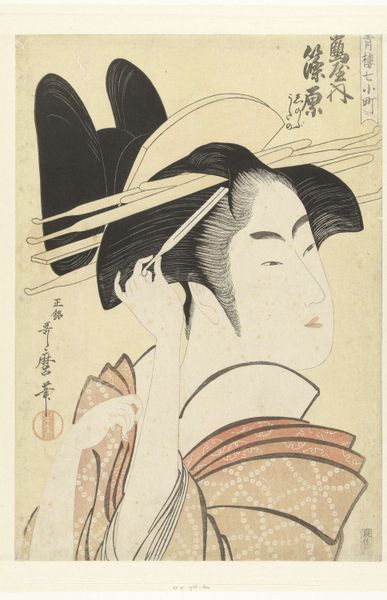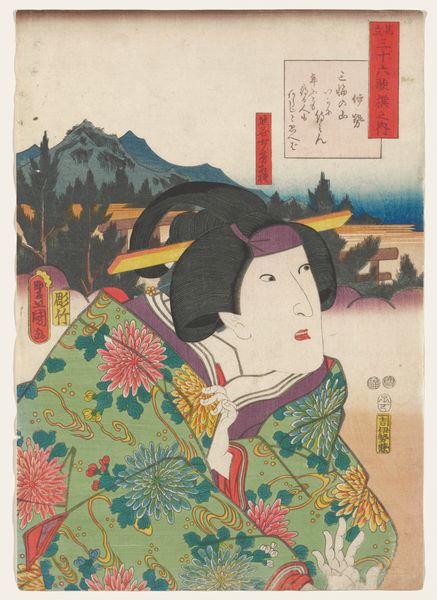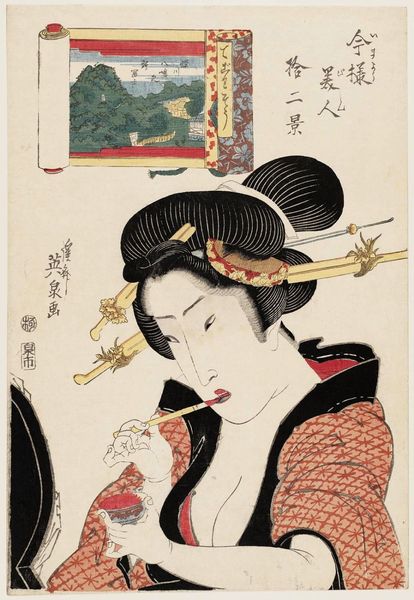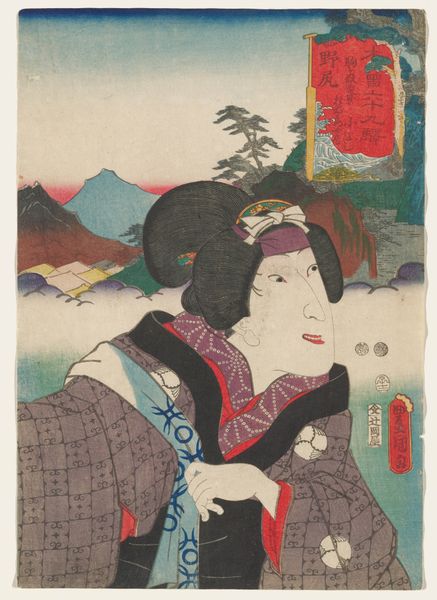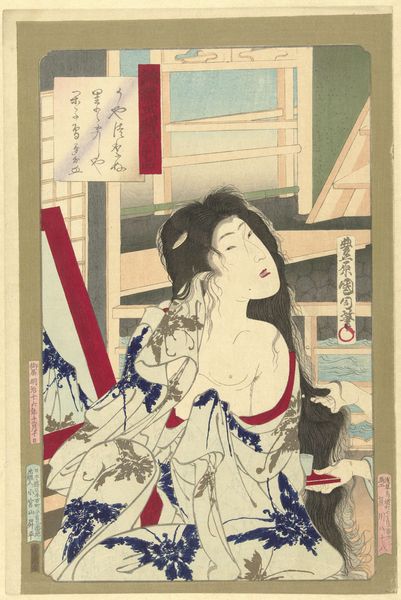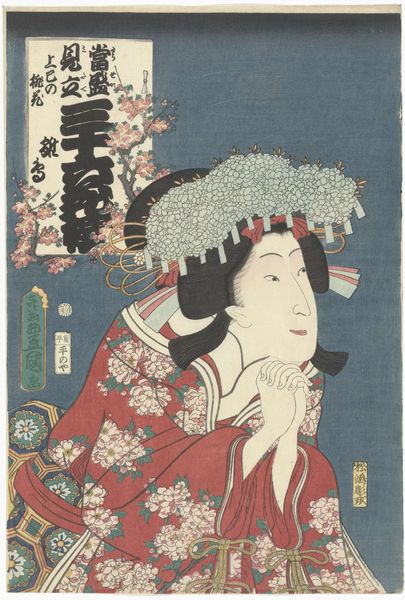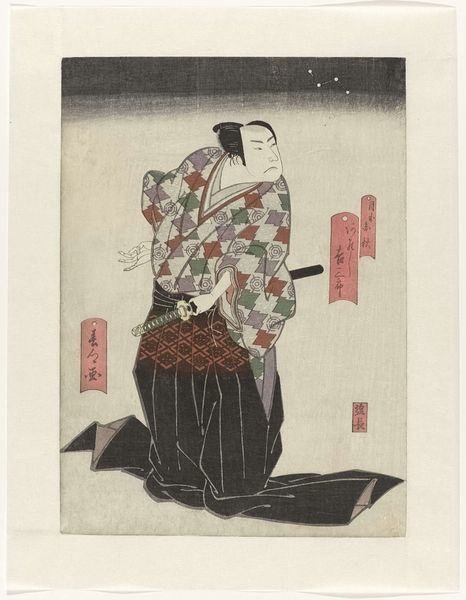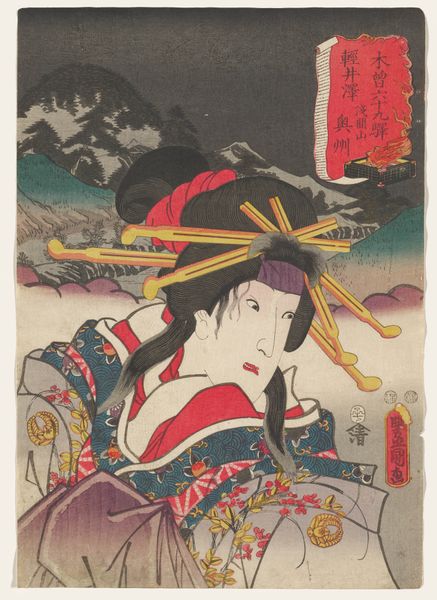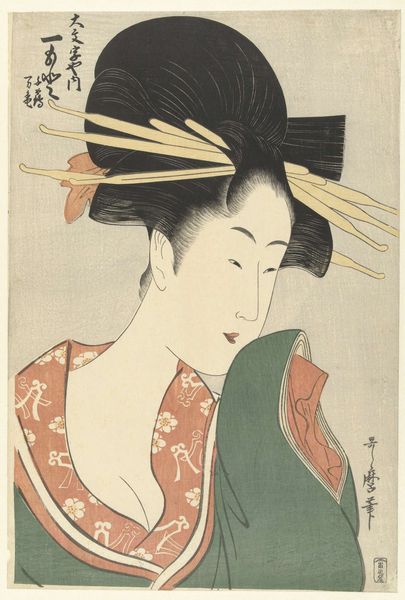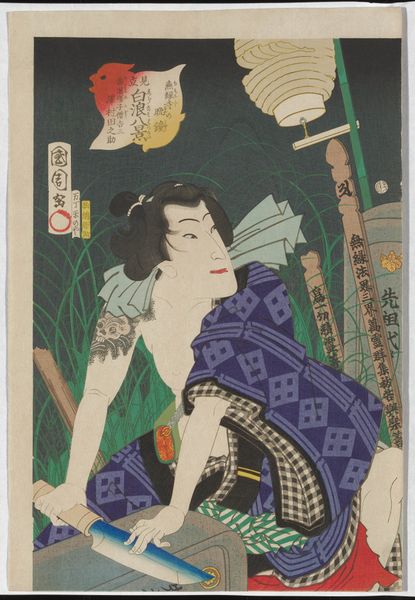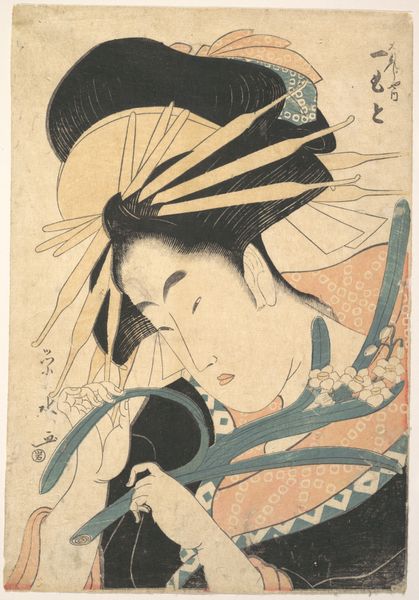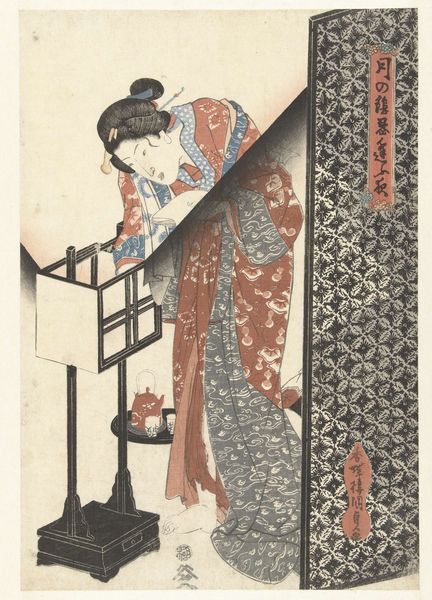
print, textile, woodblock-print
#
portrait
# print
#
asian-art
#
textile
#
ukiyo-e
#
woodblock-print
#
genre-painting
Dimensions: height 391 mm, width 265 mm
Copyright: Rijks Museum: Open Domain
Editor: This is "Avondgloed te Ryogoku," a woodblock print made sometime between 1813 and 1817 by Kikugawa Eizan. I'm immediately drawn to the intricate textile patterns and the way the bridge in the background seems to fade into the night. It’s quite delicate. What can you tell me about this piece? Curator: Let's look beyond the surface appeal and delve into the labor and social conditions behind this print. Ukiyo-e, like this one, were mass-produced using woodblocks. It's important to remember the artisans – the carvers, printers, and publishers – who were integral to its creation. How do you think the process of woodblock printing influenced the visual language of the artwork? Editor: Well, I imagine it demanded simplified forms and bold outlines, and encouraged striking contrasts in color. It looks like it must have taken many impressions. Curator: Exactly! Now, consider the social context. Prints like these weren’t ‘high art’ initially. They were a commodity, made affordable through the woodblock process. This image depicts a fashionable woman, but she's also a product consumed by a particular segment of society. Notice the bridge; it implies bustling activity, trade, and movement, the very forces driving the Ukiyo-e market. Think about it; How does the setting relate to the idea of ‘floating world’ or fleeting pleasures? Editor: It emphasizes the temporal, almost disposable nature of beauty and fashion… made even more relevant when one reflects on the intensive labor of so many unseen workers whose hands shaped the very object I’m observing. Curator: Precisely. By understanding the materiality and the means of production, we gain insight into the societal structures that both created and consumed this art. It helps us move beyond just aesthetics. Editor: That's a really different way to look at it; I had been entirely focused on the beauty of the scene! Thanks for shifting my perspective. Curator: And now, I think we both have a better grasp on all that's behind the beauty, haven't we?
Comments
No comments
Be the first to comment and join the conversation on the ultimate creative platform.

